









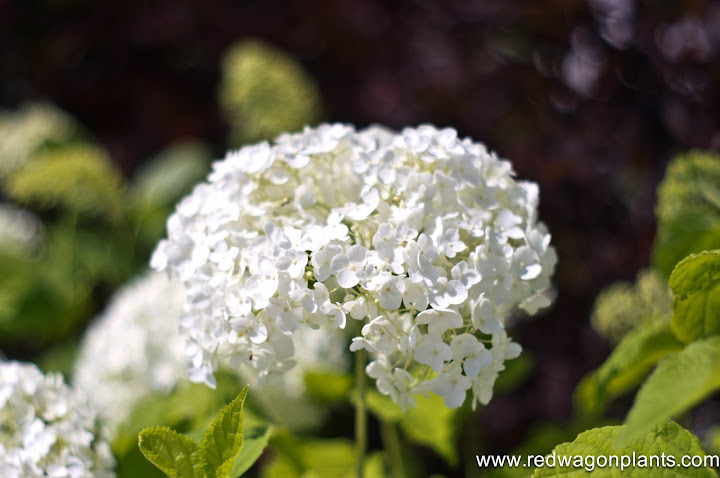





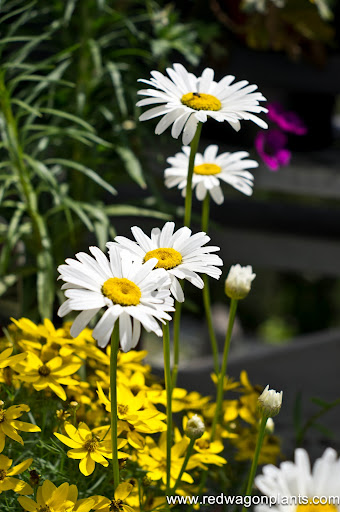

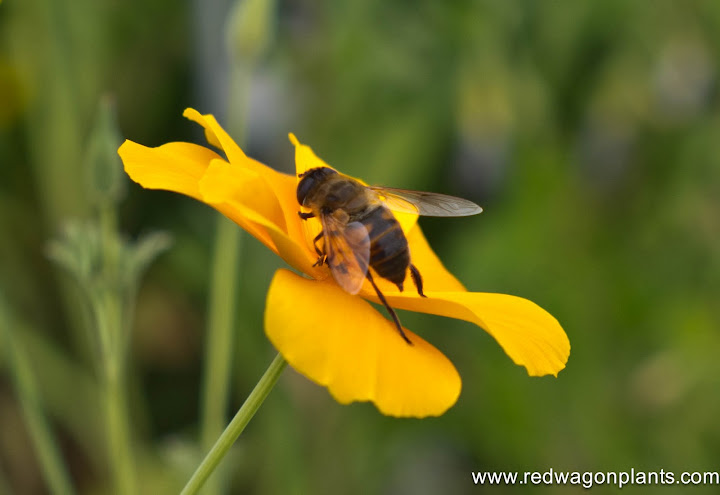







































Before you start worrying about the fungal diseases that affect many garden crops this time of year, consider brewing up a batch of fermented compost tea. It is cheap, easy to make, and can protect your plants as well as help them out if they’re already suffering. Compost tea has been studied around the world and has been found to reduce fungal diseases by 50 to 90 percent. What do I mean by fungal diseases? These are diseases spread by spores (like microscopic seeds that germinate on leaf surfaces) and are encouraged by warm, wet conditions. This is why plants that have smooth or waxy leaves are less likely to be infected than plants that have textured or hairy leaves (which hold water). Common fungal diseases include:
While not fully understood, compost tea is believed to be beneficial for several reasons. Fermentation creates a healthy community of fungi and bacteria, which may outcompete fungal disease and help support a plant’s natural defenses. It also contains nutrients, which can be absorbed through foliage.
To make compost tea, mix one part mature compost that contains manure with five parts water. Allow the mixture to sit in a shady place for two weeks (it may become smelly!) Filter out large particles through cheesecloth, then spray on tops and bottoms of leaves every two weeks. The mixture will help reduce spreading of spores by infected plants, and can prevent infection of healthy plants.
- Adapted from The Gardener’s Guide to Plant Diseases, by Barbara Pleasant
From Julie.... There are a few garden and farm writers out there that move me to no end. I have had a fascination with homesteading literature since I was a little girl and still to this day I love to pour over books, catalogs, websites and blogs that have to do with growing food, living off the land, making do with things that are around the house, etc. Within this genre, one of my absolute favorite writers is Jo Ann Gardner.

She has written eloquently about the plants she loves for decades and I have poured over some of these books countless times. She and her husband were once back to the landers in Nova Scotia, far off the beaten path, and were able to make a livelihood for themselves in a very short growing season and on very challenging soils. Her writing reads like a series of love letters to a set of handsome, rugged plants that got them through tough times. I am absolutely honored to have Jo Ann visit our greenhouses this Saturday and to share some of her plant knowledge with us. She now lives across the lake, in Essex, NY and is active in gardening efforts at home and at a local senior center. Her talk on Saturday will focus on how to use herbs in pots and containers around the home. I am sure she will bring along her wit, thrift, and cleverness and we will all be a little richer for it.
Brown Dog Books in Hinesburg is carrying her books, and they will set up a table at our greenhouses on Saturday for those of you who may wish to purchase one or two. But be warned - Jo Ann's writing will fuel the fires of any gardening addiction. Also present on Saturday will be Jess Bongard, of Sweet Lime Cooking Studio. She will be bringing us some herb treats to sip and snack post-workshop. Coincidentally, Jess is teaching an herb class in her home kitchen on Sunday. You can read about it here. A group of us are going from Red Wagon, making it a party, I am sure.
I like June. The bulk of the spring planting is done. The porch is swept off, and it is just the right time to sip a lemon verbena iced tea, make a lovage and butter sandwich, and gaze lovingly at all the herb pots surrounding the patio. I hope to see some of you this Saturday. Psst...there are only a few slots left, so please call or email to register.
There's been no shortage of excitement this week! The sweet potato slip sale was a great success (and we still have some left, if you missed out). Saturday was extra amazing because of the delicious treats whipped up by Jessica Bongard of Sweet Lime Cooking Studio...seriously, this girl rocks, and if you haven't checked out her cooking classes, you should! We're also having a sale: hanging baskets are buy one, get one 50% off, and shade perennials are buy one, get one free. So come get 'em before they're gone!

All this fine weather and summer rain are making our plants grow like crazy! Just want to share some of the glorious colors and textures coming out of our greenhouses right now...

Meet Lori and Doug, two of our favorite long-time customers and friends. Our skillful and talented guy, Eric Denice, built them some beautiful raised beds and they've been busy planting. Check out what's sprouting in their garden. These photos are from a few weeks ago, and we are updating them as we find time....so stay tuned to see more of this great progress.

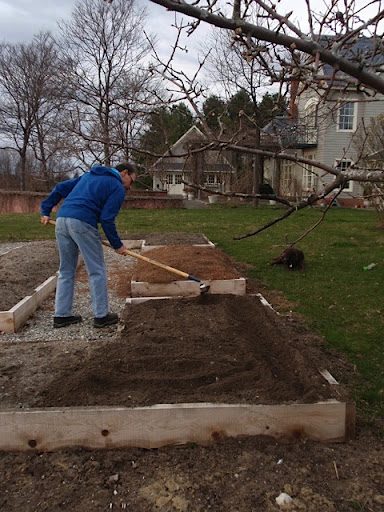





I think some incredible meals will be coming out of this garden and kitchen this summer. Keep checking in to see the changes!

Meet Lori and Doug, two of our longtime customers and friends. Last year, they visited the greenhouses repeatedly, making large purchases of vegetable plants, it seemed every day. I finally asked them if they were starting a small farm, and they admitted that they were having some problems. Apparently, everything kept turning black and dying. This does not usually happen to our plants, so I offered to visit their garden, which happens to be on the way home, and they happen to have very nice wine to offer, so it seemed like a win-win. Lo and behold, their beautiful garden site was also the low lying spot where their entire property drains. The plants were sitting in standing water (remember all the rain last year?) and were drowning. I advised them to just start over, sad as that is, because there was just no way to grow in that site.
They asked us to help them build a big beautiful raised bed garden, so we set our expert carpenter and all around handyman, Eric Denice, to the task. Here's what they created together.


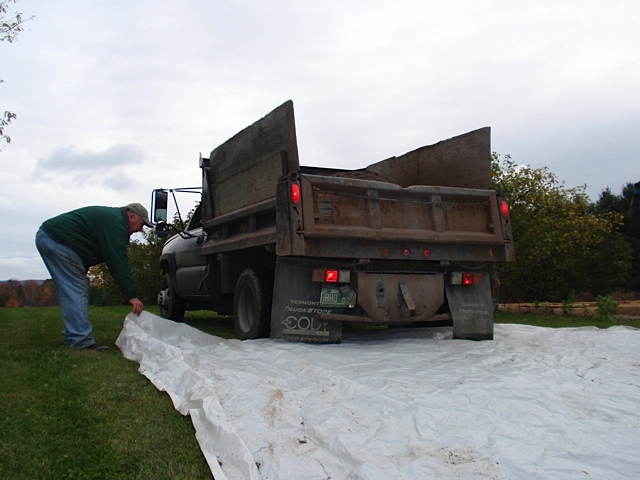
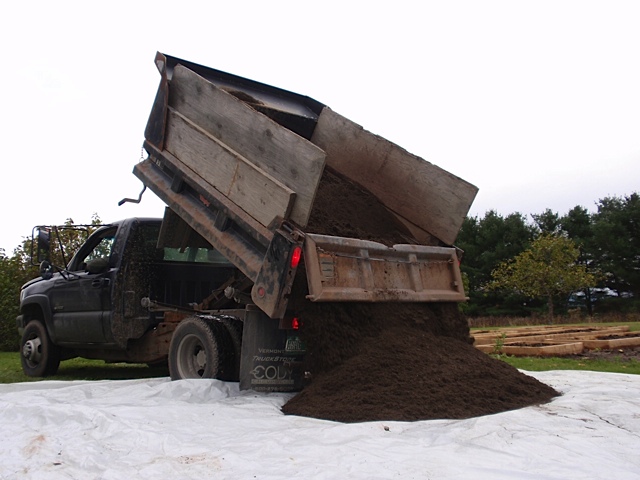

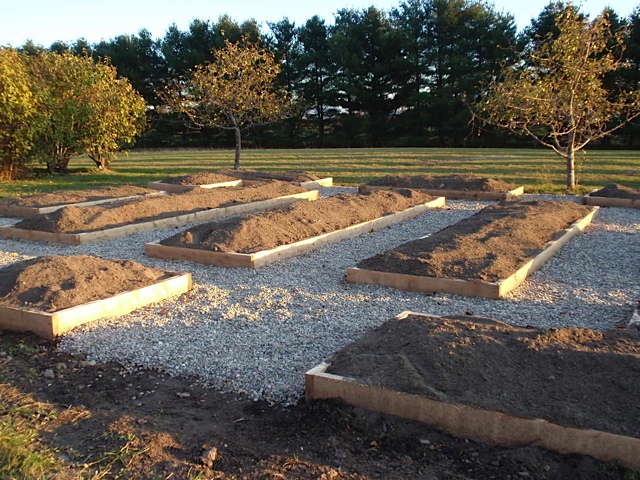
In the fall, Lori and Doug planted garlic, which is now growing beautifully, and each week, they come in to let us know what they are up to and we help them pick out plants that are appropriate for the weather. It has been such a fun project and we are grateful to Lori and Doug for including us!
Please keep checking back for updates as we chronicle the progress of this great garden and its people.

The proceeds from this sale help scholarship applicants of the Burlington Area Community Gardens secure a garden plot for the season. Come and help out your neighborhood gardeners!
For more information, please call Dan Cahill at Burlington Parks and Recreation, 802-863-0420
The sale is a partnership of Red Wagon Plants, Bibens Ace Hardware, and Burlington Parks and Recreation
This mother's day is especially important to me, because for the first time in four years I actually get to be in the same time zone with my mom! We get to celebrate our birthdays and holidays together this year, to make dinner dates and plan our gardens and do all the things we missed so much, and I feel so grateful to have her back in Vermont. Sometimes, just like the Joni Mitchell song, we don't realize how important things (or people) are to us until we don't have them around. So here's to the time we get to spend with our moms, and the chance to say thanks for their boundless love and for being just amazing.
This year we're pulling out all the stops to spoil the moms in our world - with a new play area to entertain the kids, with gooseberries, currants, hazelnuts, and quince (plus all the traditional favorites), with rose bushes and strawberry baskets, herb planters and gift cards, three new greenhouses, and too many flowers and vegetables to name. It is truly a gift to work in a place so filled with beauty and life, and to see people enjoying it is the icing on the cake.
Happy Mother's Day!
Last Saturday, we were lucky to have a visit from Charlie Nardozzi, garden educator, author, TV and radio personality, and garden coach. He provided us with two hours of entertaining and information packed advice on growing fruit at home - a project which can feel like a daunting commitment, but which he explained so clearly, that it felt like a task we must all embrace...right now. I have to admit, I have been living in the same house for 6 years and have yet to plant much in terms of fruit trees. I keep studying my property and imagining where the trees would go, but every year, another chance passes and my trepidation leaves me fruitless yet again. I have planted a few blueberry bushes and raspberries and currants far from the house, but no trees save for one orphaned plum tree a couple of years ago. Growing fruit trees always seemed like more work and maintenance than I have time for, but after learning some of Charlie's simple strategies, I feel armed and prepared. Here are a few of the general tips Charlie shared with us.....
I think I will try a few cherry trees and pears this year. I have a spot picked out, on the north facing slope outside our kitchen window. And maybe once those are in, I will start to imagine some blueberries and raspberries nearby....closer to the house than the ones I planted when we first moved here. One thing I am glad about....my years of procrastination with the back yard means that I have a blank slate and the home orchard can be very close to the house; it will be landscape and larder, all in one.
It always feels like there is a huge buildup to opening our retail area, and it's so satisfying to see it finally being enjoyed again. Our amazing staff has been working so hard and has gotten us off to a great start! There are lots of new additions to retail this year - there are three new greenhouses open to the public, Eric is creating a cozy new area complete with benches, a sand pile for kids and raised demonstration beds, and we have lots of new trees and shrubs for turning your yard into paradise. The first step to creating a cozy outdoor space is to enclose it. Our quick and skillful jack-of-all-trades, Eric, is building us a simple and beautiful fence to make the space more comfortable.

Given that our spring has been pretty mild over all, many gardeners are eager to get in the garden and plant a little earlier than normal. While the temptation is huge, it is also a good idea to remember that a hard frost can still come anytime in the next month or so and the ground is not all that warm. So what can go in the ground now? Lots of cold hardy vegetables and herbs are ready to go including onions, broccoli, cabbages, kales, mustards, boc choi, and more. It is best to harden off the plants for a few days before transplanting them - this means letting them get used to the cold, the wind, and the direct sunlight. Most of our plants will come to you already hardened off, but other nurseries may not take care to do that, so it is best to do it yourself. You can also use some row cover to create a small micro-climate for the young plants. We use hoops made out of 9-gauge wire to hold up the fabric off of the plants. This will give the plants a breathable, water permeable house to grow under during their initial weeks in the garden. The growth rate will be about double the rate of plants grown without row cover.
You can read more about hardening off here.
Another great thing to plant now are crops you direct seed and that can germinate in cold conditions - spinach, carrots, beets, turnips, radishes, scallions, peas, and fava beans.
If you have a spot in your garden that you are not going to use this year, you might want to consider spreading some cover crop seed. this will help ensure that the soil is fed during it's fallow period. The cover crop is essentially plants that are grown just for the soil's on going health. For cold weather sowing, you might want to try a cow pea and vetch mixture or oats or an annual clover . This will smother out weeds and add lots of organic matter to your garden.
Spring is never boring at Red Wagon! We've always got lots of exciting things going on, and this week was no exception. We had a terrific open house (our apologies to those who arrived after the sticky buns ran out!) and our amazing retail crew filled the retail greenhouse with happy young plants. Think spring!
From Lily: Gardening has been a constant in my life for as long as I can remember. And with one constant seems to come another… Garden Critters.
We all have our stories. The deer strolled though and ate the tops off all the baby beets. The woodchucks chomped cabbage heads in half. The neighbor’s horse got loose and stampeded the entire garden. Rascally raccoons destroyed the corn crop in the night. The squirrels had family feast in the blueberry bushes. Robins pulled out every bean sprout as they emerged from the earth. I’m all for sharing the harvest, but come on. This past spring was the last straw. I watched my own dog eat the asparagus shoots right out of the ground!
It was time to build a fence.
To install my own fence seemed like an unappealing and daunting project. I was intimidated. I like freedom, ease, and of course beauty in the veggie garden. Alas, I had to make moves. Precious asparagus was being robbed. There was no time to waste. Honestly, the dog was the main motivator. My biggest worry was that my quickie fence would be an eyesore. The final product has turned out to be nothing of the sort.
My garden comrades and I made construction choices with installation time, simplicity, and expense in mind. We decided on very basic materials that were easy to procure. Cedar posts for the corners and the entrance; installed with a borrowed posthole digger. Wooden grade stakes as the perimeter; one every 5-ish feet, pounded in with a mallet. Coated wire fencing with small holes at the bottom to keep out little critters and large holes at the top which is eye pleasing. We paid a little extra for this but I’m glad because the design is truly easy on the eyes (visually I’m not a fan of chicken wire). A staple gun came in handy to attach the fencing to the grade stakes. Lastly, a very simple wooden frame was constructed with the fencing material as the gate.
The fence has given the garden a sense of place and boundaries. It is no longer just a plot plowed out of the lawn. There is now a container to hold all the ideas, inspirations, and plans for the garden. In only a few hours we transformed the space! This year I hope to incorporate the fence more into the planting scheme of the garden by creating a narrow bed along the edge. The fence is a built in trellis. Why not plant annual climbing flowers! My favorites of course: Sweet peas, Cobaea, and Painted Lady Runner Beans.
I’ve also been dreaming up a project to build a solid gate. A gate that is structurally sound and provides an identity to the garden. Entrances hold an opportunity to set a scene, create a mood, transition from one thing to another. They are the first impressions of a space. When you pass through a gate or doorway you have the chance to leave behind what you don’t need: a chance to step into the present.
Here's some inspiration for gates and fences…









The rollercoaster ride of spring at Red Wagon is in progress! We had a glorious day potting up perennials last week outside in the sun. Fortunately the plants are oblivious to the chilly weather this week, putting up lots of new leaves and enjoying the cozy conditions in our greenhouses. And you can too! Come to our open house this Sunday, April 1st from 9am to noon and soak up some sun, pick up some adorable plants for your table or windowsill, check out the calves next door and talk to our great staff about your gardening goals! Check out the photos below to see what we've been up to...
Sheet mulching is a technique for creating a garden bed that does not require tilling or hand weeding. It is intended to mimic the natural mulching process that occurs on the forest floor. It is also suitable for converting a section of lawn into a garden without breaking the sod. There are a lot of different methods but here is the simplest one:
Plants can be transplanted directly into this bed and should be closely spaced to minimize the germination of weeds. Note: this method is not recommended for areas that are prone to flooding or waterlogging. Graphic courtesy of agroforestry.net


We welcome you to visit our greenhouses on Sunday, April 1st, from 9 am to noon.
We will have coffee, tea, and snacks for you as you peek around the greenhouses and see what it looks like when we are in full swing. Feel free to bring children, see the calves next door, and come armed with garden stories and questions!
We will have some plants for sale as well as Johnny's Selected Seeds. Come by for cold hardy flowers, herbs and veggies. Bagged compost will be available for feeding your garden beds and, best of all, our staff will be on hand to meet you and talk shop!
We look forward to seeing you,
-Julie and the Crew
It's official! Production is well under way and the weather seems to agree that it is indeed spring. And, in keeping with the spring tradition of new beginnings, we've got lots of fun new toys to play with this year! Check out the photos below to see what's new at Red Wagon this year...
Here's to another great season!
~ Sophia
The trick to having fresh lettuce all summer is to choose your varieties and timing well. You will need to have a succession of different varieties planted every week or so throughout the summer to ensure a constant supply. Start with cold tolerant varieties in the spring, then plant heat- and drought-tolerant ones in the summer, and plants with good holding ability and heat tolerance in late summer and early fall. Plants turn bitter when they are starting to bolt (go to seed) and are exposed to too much heat, so choosing your variety and timing well also avoids bitterness. Here’s an example planting:
Perennials: Angelica, Catnip, Chives and Garlic Chives, French Sorrel, Germander, Anise Hyssop, ‘Munstead’, 'Grosso', 'Provence' Lavender, Lemon Balm, Lovage, Mint, Oregano, Rue, Sage, Winter Savory, Sweet Woodruff, French Tarragon, Thyme, Valerian Annuals: Artemisia (self seeds), Basil, Chamomile (self seeds), Chervil (self seeds), Cilantro, Dill, Fennel, Feverfew (self seeds), Lemongrass, Marjoram, Papalo, Parsley, Red Shiso, Rosemary, Summer Savory
Some herbs can be kept as houseplants over the winter. Some that do well are rosemary, thyme, sage, basil, and parsley. It is always nice to have a few pots of these in the kitchen to snip into bowls of soup, salads, scrambled eggs and roasted vegetables and meats. You can dig them up out of the garden in the fall or just grow them in pots all summer that you then bring into the house once the temperature drops.